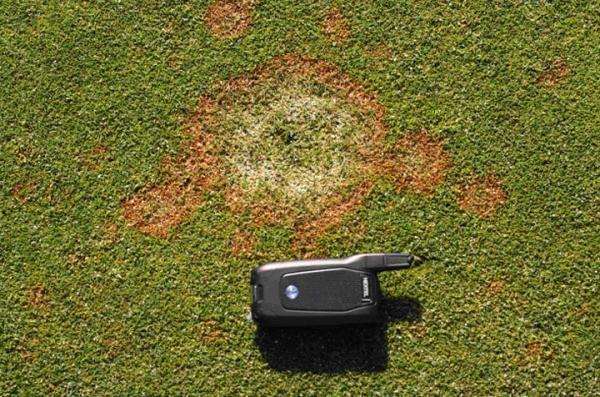 Damage from weeks of ice cover is not the only threat facing superintendents as they prepare for the upcoming golf season.
Damage from weeks of ice cover is not the only threat facing superintendents as they prepare for the upcoming golf season.Although spring is coming, snow mold is a recurrent problem caused by prolonged periods of winter weather. Heavy and frequent snowfall along with long periods of colder-than-average temperatures have dominated winter throughout much of the country's northern tier, making snow molds more of an issue this year.
Snow mold is active at temperatures just above freezing in moist conditions, in other words during thaw periods. However, there are many types of snow mold and correctly diagnosing it is important.
The gray snow molds (Typhula incarnata and Typhula ishikariensis) most often occur when snow cover exceeds 40 to 60 days. However, pink snow mold (Michrodochium nivaile) does not require any snow cover to develop.
All cool-season grasses are susceptible to snow mold damage, but it can be especially troublesome in creeping bentgrass and annual bluegrass.
With pink snow mold, circular patches develop from several inches to more than a foot in diameter. The color can vary considerably from pink to tan or brown infected turf. Under wet conditions, pink snow mold patches appear slimy; when dry, the turf leaves appear matted and collapsed.
Typhula gray snow mold symptoms appear as circular patches of straw-colored to grayish-brown turf. The turf may also appear matted, with the appearance of grayish-white mycelium at time of snow melt. The mycelium often dries and becomes encrusted over the patch.
To identify gray snow molds, look for the sclerotia (a compact mass of mycelium that is the survival structure of the pathogen) on the leaf tissue and debt. Typhula incarnata has reddish-brown to dark-colored sclerotia that are up to 0.2 inches in diameter. Typhula ishikariensis has smaller sclerotia that appear to similar to flecks of black pepper on the leaves and debt. Active mycelium is white to gray in color.
Pink snow molds do not produce sclerotia, and the active mycelium is a pinkish white in color. Both pink and gray snow molds can occur together, so it can be difficult to determine which is the predominant pathogen.
If damage from gray snow mold is present, little can be done to undo the damage, so focus should be on recovery. To help determine the extent of damage, take samples of affected turfgrass into an environment that is warm, lighted and conducive to growth. To assess potential turf recovery, observe the growth of the plants, watching for the development of new shoots. With both snow molds, recovery may take some time. Warm temperatures are required for new shoots and leaves to develop in damaged areas.
Tips for recovery
> Remove snow and ice from turfgrass areas
> Lightly rake the grass to promote air circulation and to allow light to penetrate the canopy and encourage new shoot and leave development.
> If there is any dead or matted material, rake and remove. In the case of dead turfgrass, renovate the site.
> If the site did not receive appropriate fertility in the fall, a modest application of starter fertilizer is recommended.
> For gray snow molds, the damage is done, so fungicide applications are of little to no benefit at this time. In the case of pink snow mold, fungicide applications still can help and are recommended, especially if cool, wet conditions are experienced in Poa annua putting greens.
Joe Rimelspach, Ph.D.
Todd Hicks
Francesca Peduto Hand
The Ohio State University

